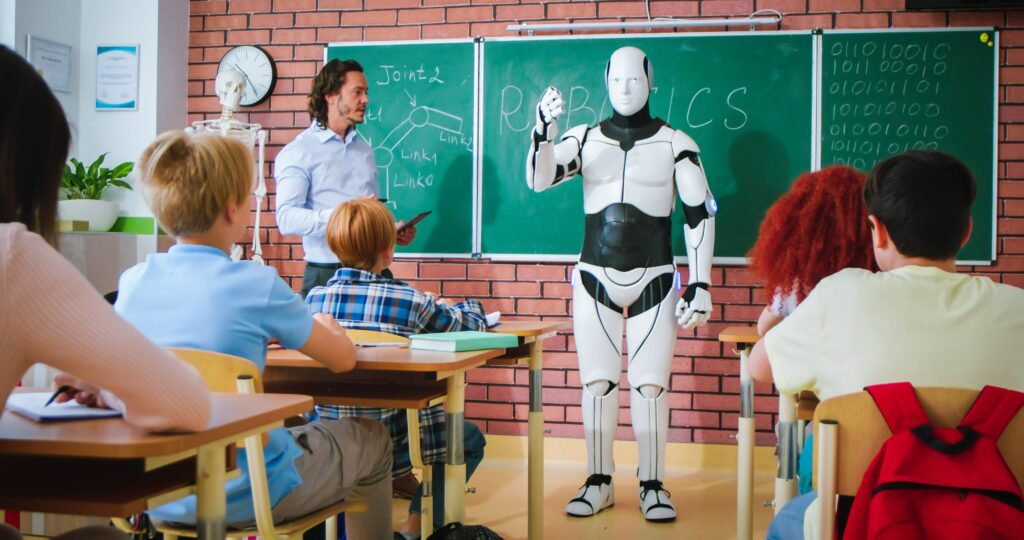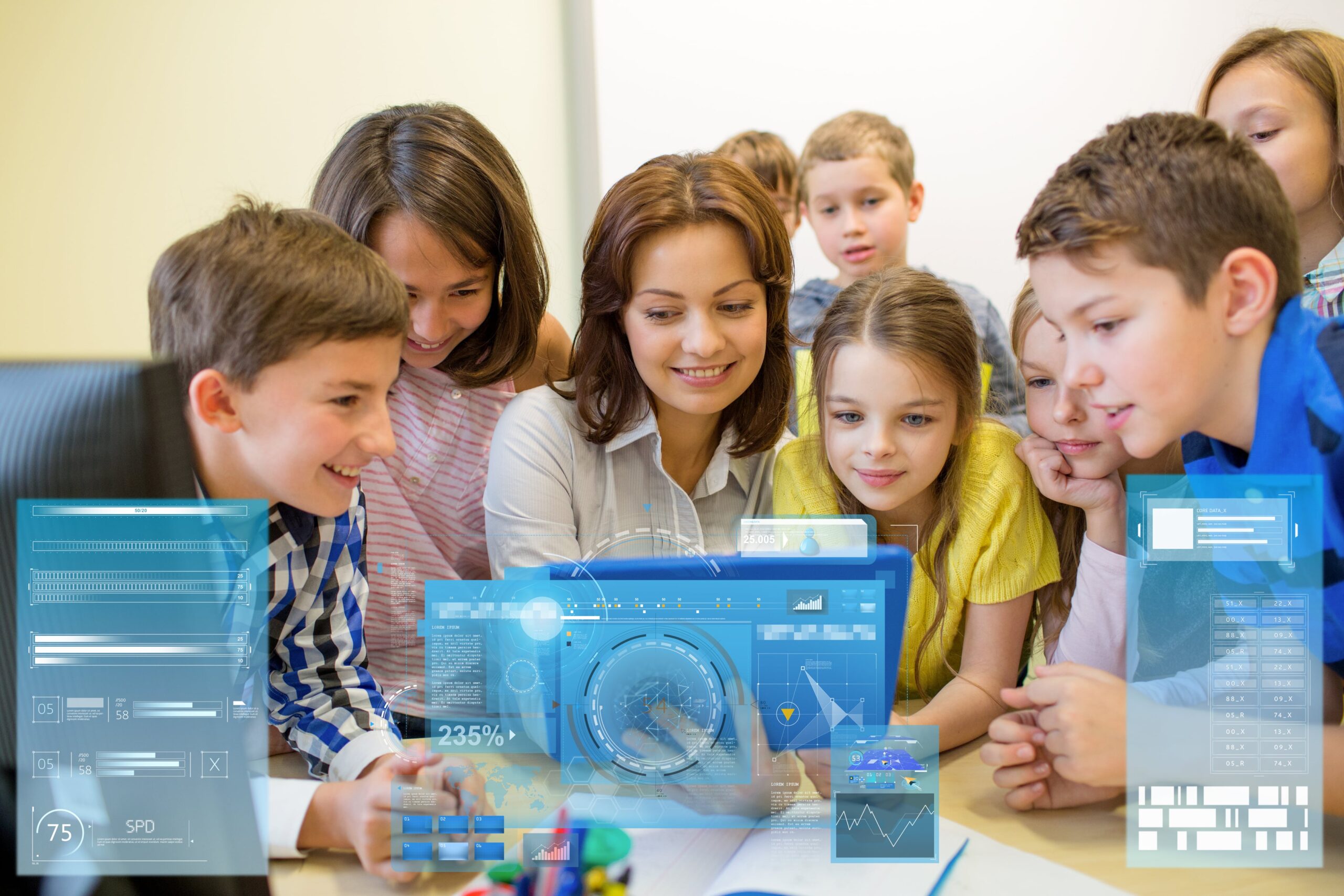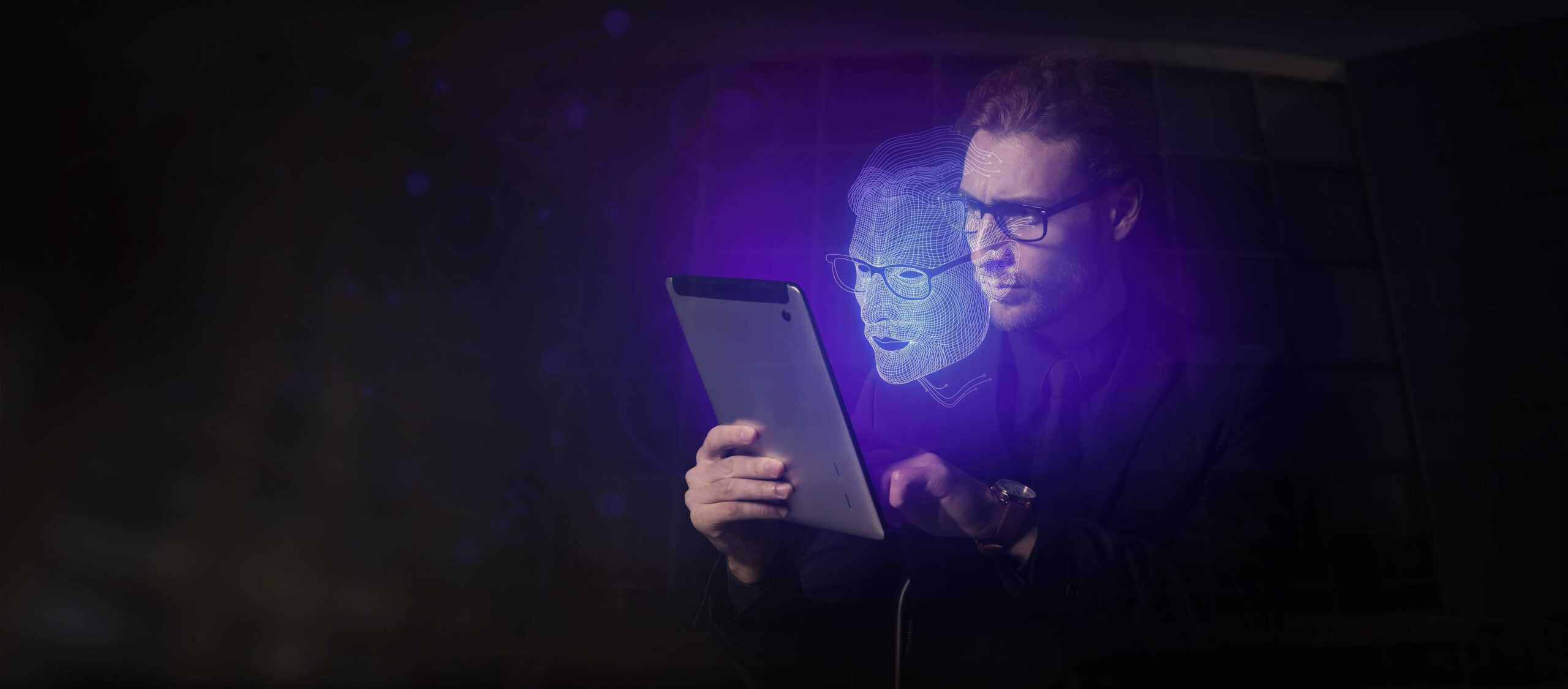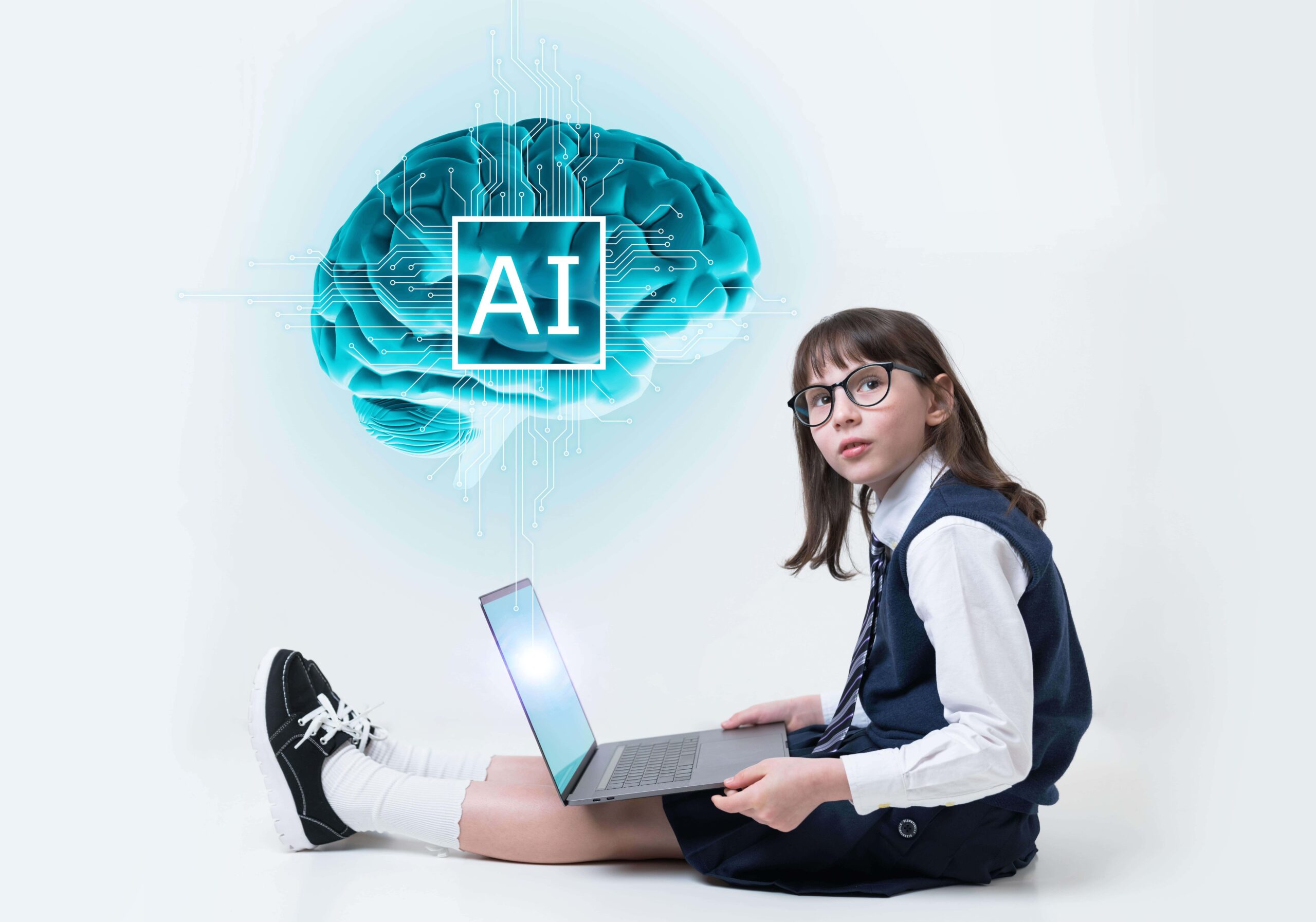- AudioPen converts voice into text notes
- Curipod’s AI tool helps create dynamic, interactive classrooms
- Eduaide.AI transforms lesson planning and resource creation for teachers
- AI chatbot becomes ‘principal headteacher’ at school in West Sussex
- AI sensors are offering a deeper look into student behaviour
Education today is at a critical crossroads. Our traditional system, shaped during the industrial era, isn’t quite keeping up with the needs of 21st-century learners. It’s been geared towards producing a uniform workforce, a concept that’s increasingly out of sync with our fast-paced, diverse world. This one-size-fits-all approach, a relic of the past, is being questioned for its relevance and effectiveness in today’s dynamic environment. Picture a typical classroom: students seated in rows, learning in a uniform way that hasn’t changed much over the years. This system often fails to recognise each student’s unique learning journey.
These traditional methods, with their emphasis on authority and uniformity, can dampen creativity and curiosity — the very ingredients needed for innovative thinking and learning. But there’s a wave of change on the horizon, thanks to new technologies, especially in the realm of AI. These advancements promise to transform education, offering more personalised, engaging, and adaptable learning experiences. In this article, we’ll explore these tech innovations and how they’re set to redefine education. These tools not only help teachers create lesson content, provide educators with valuable insights into student learning, boost efficiency and productivity, and enable personalised learning for students — they actually lead to a fundamental shift in how education can be more responsive to the needs of every learner. Let’s have a look at the ways in which technology is reshaping education.
AudioPen exemplifies how technology is reshaping the landscape of education, offering new ways to capture, organise, and utilise information effectively.
1. AudioPen converts voice into text notes
Educational tools are constantly evolving, offering new and innovative ways to enhance learning experiences. One such tool is AudioPen, a web-based application that transforms voice recordings into text notes. Its platform independence means it’s accessible across various devices, although it doesn’t offer a specialised mobile experience. With a straightforward interface, users can easily start and stop recordings, and the app swiftly transcribes the audio into text using OpenAI’s APIs, including Whisper for transcription. AudioPen provides a basic free version, allowing users to record voice notes for up to three minutes and store up to ten notes on the site. However, its premium plan offers substantial additional features.
Premium users enjoy longer recording times (up to 15 minutes), unlimited cloud storage for notes, and the ability to upload or download audio files. They can also tag notes for easy retrieval and access enhanced functionalities like automatic summary generation and the creation of ‘super summaries’ from multiple notes on the same topic, which is particularly useful for research projects. Further enhancing its utility, AudioPen has introduced a Chrome extension, enabling note-taking directly from a browser tab. The recent addition of a writing style library adds another layer of versatility to the app. The developer is also exploring improved note-sharing capabilities, demonstrating a commitment to continually refining the tool to better serve its users in educational settings. This app exemplifies how technology is reshaping the landscape of education, offering new ways to capture, organise, and utilise information effectively.
2. Curipod’s AI tool helps create dynamic, interactive classrooms
Another tool making waves in education is Curipod, a digitally interactive platform that reshapes the traditional classroom experience. Curipod stands out as a presentation-style tool that blends various interactive elements such as polls, word clouds, and drawings, creating a dynamic learning environment for students and teachers alike. What sets Curipod apart is its seamless integration of artificial intelligence (AI) in lesson creation. Teachers can harness the power of AI to design interactive lessons in mere minutes, tailored specifically to the diverse learning needs of their students. This AI functionality not only simplifies the lesson planning process but also retains the essential element of teacher oversight, ensuring that the educational outcome aligns perfectly with their goals.
Unlike some tools where AI integration is still nascent and less effective, Curipod excels by allowing educators to refine AI-generated content, ensuring its practical utility in the classroom. It offers the flexibility of creating lessons from scratch or choosing from a range of pre-built templates, all while leveraging AI for a faster, more intuitive creation process. Collaboration is another key feature of Curipod. Teachers can co-create lessons, share them with colleagues or student groups, and engage students through real-time polls and activities. The results of these interactive sessions can be displayed live, creating an engaging classroom experience. Furthermore, Curipod’s lessons are not only shareable but also editable and reusable, making it a sustainable tool that aids in assessments and tracking student progress over time. This innovative approach promises to save time for educators while enhancing the overall learning journey for students, making Curipod a game-changer in the realm of educational technology.
3. Eduaide.AI transforms lesson planning and resource creation for teachers
In the evolving landscape of educational technology, Eduaide.AI emerges as a groundbreaking tool — made by teachers, for teachers — that reshapes how educators approach lesson planning and resource creation. This AI-assisted platform offers a treasure trove of over 100 resource types, enabling teachers to craft high-quality instructional materials with ease. Its standout feature is the AI-assisted lesson development, a game-changer that analyses student data and curriculum needs to produce tailored lesson plans. This not only streamlines the planning process but also aligns lessons more closely with students’ individual learning objectives. But Eduaide.AI’s innovation doesn’t stop there. It introduces generative teaching resources and AI-created supplements like quizzes and worksheets, designed to deepen understanding and foster active learning.
These tools are adaptable, allowing educators to tweak them to fit their unique teaching styles and students’ needs. Such versatility is a boon in classrooms with diverse learning styles. The platform also features an AI-powered assessment builder. This tool simplifies the creation of a variety of assessments, such as short answer questions, multiple-choice questions, and interactive quizzes, providing insights into student progress and guiding teachers in fine-tuning their instructional strategies. Behind Eduaide.AI are cofounders and teachers Thomas Thompson and Thomas Hummel, who are driven by a vision to enhance — not replace — the skills and passion of educators. They see Eduaide.AI as a testament to technology’s potential to empower teachers, making their work more impactful and rewarding. This tool represents a significant step forward in educational technology and offers an array of possibilities to educators worldwide. This makes teaching not only more efficient but also more effective and enjoyable.
“The world-changing technology is helping the school to step into the future while preserving the core values of traditional education”.
Tom Rogerson, headmaster at Cottesmore School, West Sussex, UK
4. AI chatbot becomes ‘principal headteacher’ at school in West Sussex
In a bold step blending traditional education with cutting-edge technology, Cottesmore School in West Sussex has taken an unconventional path. They’ve appointed an AI chatbot, Abigail Bailey, as their ‘principal headteacher’. While this may sound like a scene from a sci-fi novel, it’s very much a reality. Abigail Bailey, designed with a professional digital image, isn’t there to replace human jobs but to complement and support the existing (human) headmaster, Tom Rogerson. This implementation of AI in education represents a significant shift in how schools view and utilise technology. Mr Rogerson explains: “The AI principal has been developed to have a wealth of knowledge in machine learning and educational management, with the ability to analyse vast amounts of data. Sometimes having someone or something there to help you is a very calming influence. It’s nice to think that someone who is unbelievably well trained is there to help you make decisions”. He continues: “It doesn’t mean you don’t ever also seek counsel from humans. Of course you do. It’s just very calming and reassuring knowing that you don’t have to call anybody up, bother someone, you don’t have to wait around for an answer”.
Abigail Bailey, leveraging deep learning and generative AI technologies similar to OpenAI’s ChatGPT, comes with specialised knowledge in machine learning and educational management. Her role includes assisting in policy formulation and offering support for diverse student needs, including aiding children with ADHD. Furthermore, after being unsuccessful in finding a suitable human candidate, Cottesmore has also introduced Jamie Trainer, another AI-powered chatbot, as the head of AI, reflecting the school’s commitment to integrating AI into its fabric. Cottesmore’s pioneering approach extends beyond administrative roles. The students are already benefiting from personal AI assistants, tailored to enhance their understanding of their learning styles. This innovative strategy, as Rogerson asserts, is not just about embracing futuristic technology but doing so while preserving the essence of traditional education. This blend of old and new is a glimpse into how schools are reimagining education, making it more adaptive, personalised, and forward-thinking, all without losing sight of the fundamental values that underpin educational excellence.

“We are developing an end-to-end full cycle system that starts at collecting data from children’s bodies via wearables and ends with machine-interpreted algorithmic observations and interventions. It can detect where you are exactly in the classroom and which direction you’re looking at, who else is around you”.
Subir Biswas, professor at MSU’s department of electrical and computer engineering
5. AI sensors are offering a deeper look into student behaviour
In an innovative leap forward, Michigan State University researchers are harnessing the power of AI and wearable technology to transform the educational experience for students with developmental disabilities, such as autism and ADHD. Supported by a $600,000 grant from the National Science Foundation, this project involves testing new sensors that can be attached to children’s clothing or placed around the classroom. These sensors are designed to track a child’s location, body orientation, movement, and speech within the classroom setting. This groundbreaking technology offers teachers real-time feedback and post-class analysis on student engagement. By understanding how students interact with their peers and navigate the classroom environment, educators can tailor interventions more effectively to support each child’s unique needs. The aim is to improve outcomes by fostering a more inclusive and responsive learning environment.
Subir Biswas, a professor in MSU’s department of electrical and computer engineering and a researcher on the project, says: “The technology of collecting behavioural data and applying modern AI techniques to infer a child’s mood is the key enabler of the project. We are developing an end-to-end full cycle system that starts at collecting data from children’s bodies via wearables and ends with machine-interpreted algorithmic observations and interventions. It can detect where you are exactly in the classroom and which direction you’re looking at, who else is around you. We don’t measure eye contact, but we can tell by collecting this data who is possibly talking to whom”. Interestingly, the potential of this technology extends beyond younger learners. The researchers believe it could also be beneficial for older grades, helping teachers support students with mental health conditions like depression or anxiety. The sensors, which wirelessly upload data to the cloud for AI analysis, provide insights into social dynamics, such as who initiates conversations or how long interactions last. This data could uncover patterns and behaviours that might otherwise go unnoticed, offering a new dimension of understanding to educators and enabling them to create a more engaging and supportive classroom for all students.
In closing
As we conclude our exploration of these 5 new tools that are set to reshape education, it’s clear that these are not just fleeting trends. These developments point to a transformative movement that is redefining the very essence of how knowledge is imparted and absorbed. Digital learning environments, enhanced by AI, are breaking down traditional barriers, making education more inclusive, adaptable, and reflective of the individual needs of learners. However, with great power comes great responsibility, and we must ensure that the technology enhances rather than replaces the human touch in education. The importance of teacher-student interaction, the value of human judgement, and the need for a personalised approach to teaching cannot be understated.
We must strike a balance, leveraging AI to augment our educational systems while preserving the core values that underpin effective learning. In the future, as AI technology evolves and becomes more sophisticated, we can expect even more groundbreaking advancements in education. These developments promise to not only make learning more efficient and engaging but also to bridge gaps in educational access and quality across the globe. So, as we stand on the cusp of these exciting advancements, we’re left to ponder the profound implications of AI in education. Will these developments merely enhance existing educational frameworks, or will they redefine learning in ways we have yet to fully understand? How will we harness the full potential of AI while safeguarding the human essence of education? The answers to these questions will shape the future of learning for generations to come.




